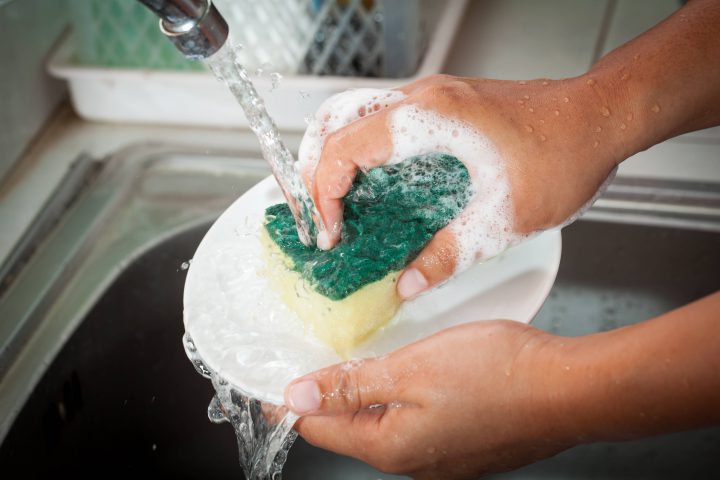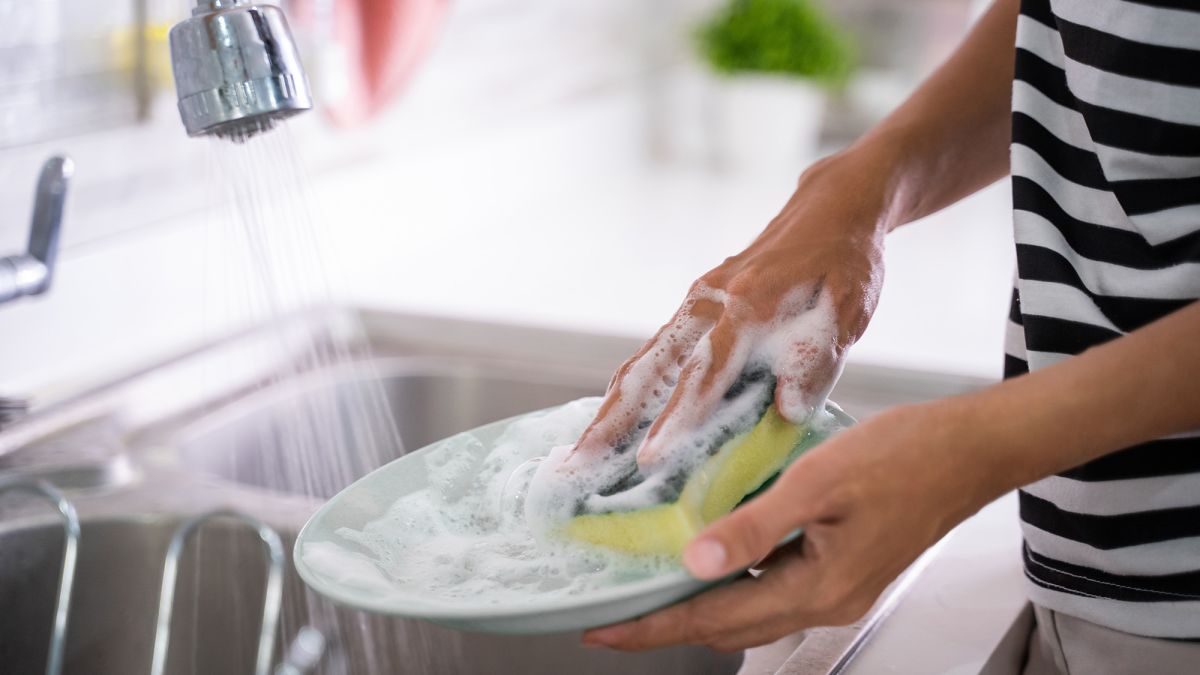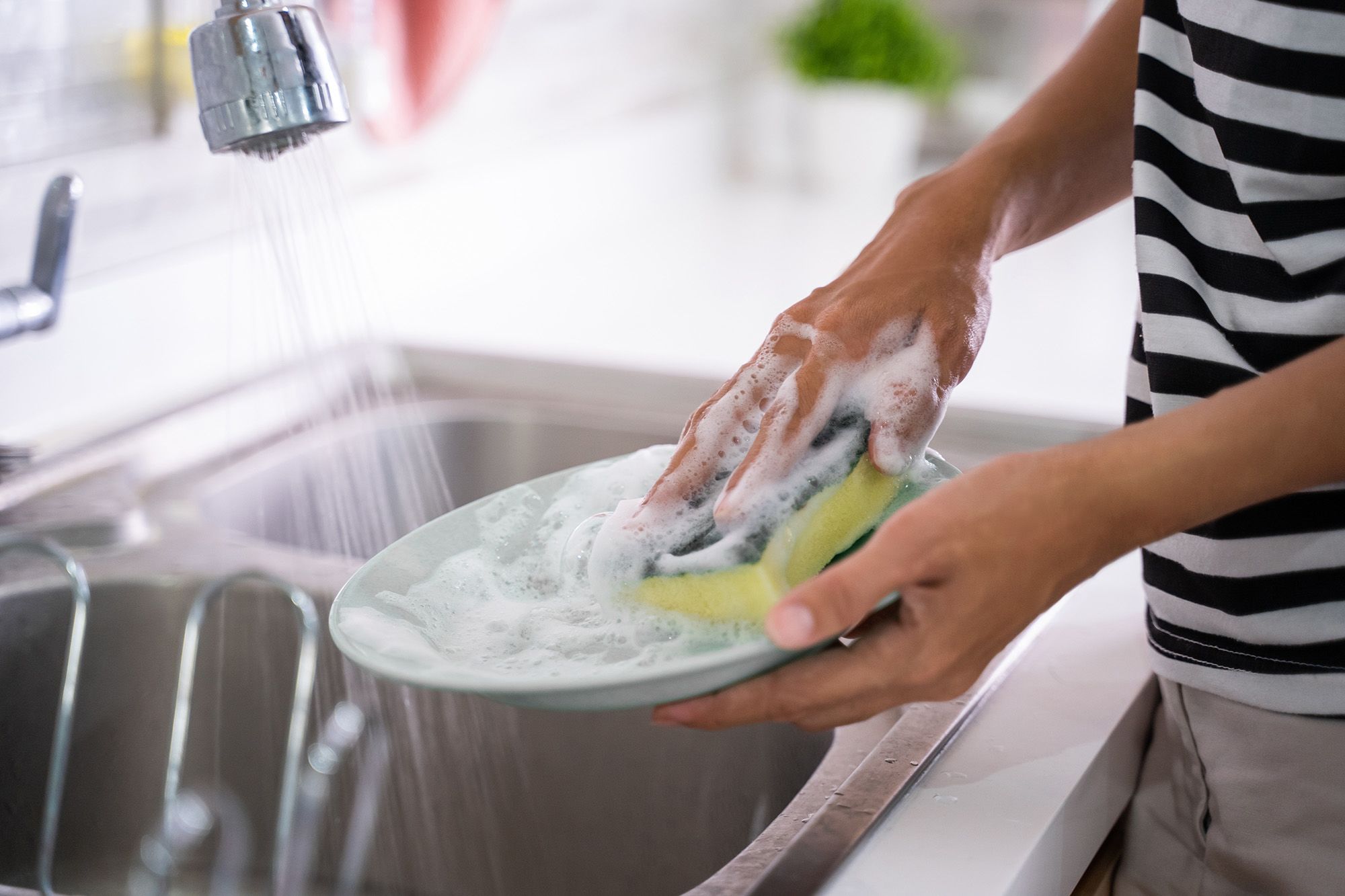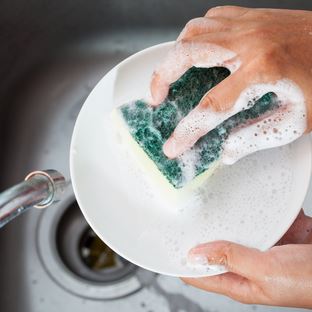How Long Should You Use a Sponge to Wash Dishes – A sponge should be replaced every one to two weeks for effective dishwashing. Are you wondering how long you should use a sponge to wash dishes?
The lifespan of a sponge can significantly impact the cleanliness and sanitation of your dishes. We will discuss the recommended time frame for using a sponge, ensuring optimal dishwashing results. By understanding how often you should replace your sponge, you can maintain a hygienic kitchen environment and avoid the potential risks of using a worn-out sponge.
Read on to discover the best practices for sponge usage and how to identify when it’s time for a replacement.

Credit: globalnews.ca
Determining The Lifespan Of A Sponge
When it comes to washing dishes, using a sponge is a convenient and effective option. But have you ever wondered how long you should actually use a sponge before replacing it? Determining the lifespan of a sponge is crucial to maintain proper hygiene in our kitchens. Let’s dive into the factors that affect the lifespan of a sponge and some best practices to help prolong its usability.
Factors Affecting Sponge Lifespan
1. Frequency of Use: The more often you use a sponge, the quicker it wears out. If you find yourself washing dishes multiple times a day, it is likely that your sponge will deteriorate faster.
2. Type of Use: The type of cleaning you use your sponge for also affects its lifespan. Scrubbing stubborn stains or using abrasive cleaners can cause the sponge to wear out more rapidly.
3. Quality of Sponge: The quality of the sponge you choose plays a significant role as well. Higher quality sponges made with durable materials tend to last longer compared to cheaper alternatives.
4. Level of Care: How well you take care of your sponge can greatly impact its lifespan. Proper cleaning and storage techniques can help prevent the growth of bacteria and ensure that your sponge remains usable for a longer period of time.
Best Practices For Prolonging Sponge Lifespan
By following these best practices, you can extend the lifespan of your sponge and enjoy its effectiveness for a longer duration:
- Rinse After Use: Rinse the sponge thoroughly after each use to remove any excess food particles or soap residue.
- Air Dry: Allow the sponge to air dry completely between uses. Moisture can promote bacterial growth and cause the sponge to deteriorate faster.
- Avoid Prolonged Soaking: Do not leave the sponge soaking in water for prolonged periods as this can lead to bacterial accumulation and a shorter lifespan.
- Replace when Necessary: Keep an eye out for signs of wear and tear such as fraying, a foul odor, or bacterial growth. If you notice any of these signs, it is time to replace your sponge.
- Sanitize Regularly: To keep your sponge clean and germ-free, sanitize it regularly. You can do this by either microwaving a damp sponge for a few seconds or soaking it in a solution of water and bleach.
By understanding the factors that affect sponge lifespan and implementing best practices for its care, you can ensure that your sponge remains hygienic and functional for as long as possible, making your dishwashing experience a breeze!

Credit: www.cnn.com
Signs It’s Time To Replace Your Sponge
Keeping your kitchen clean and hygienic is essential, and one of the most common tools we use to accomplish this is the sponge. However, using the same sponge for too long can actually be counterproductive, as it may harbor bacteria, mold, and unpleasant odors. To ensure proper cleanliness and a fresh environment, it’s important to learn the signs indicating that it’s time to replace your sponge.
Visible Wear And Tear
If your sponge starts showing visible wear and tear, it’s a clear indication that it needs to be replaced. Over time, the abrasive side can become frayed or disintegrate, rendering it less effective in scrubbing away dirt and grime. Additionally, chunks of the sponge may start to break off, making it difficult to clean properly. By replacing your sponge as soon as you notice these signs of wear and tear, you can ensure effective and efficient dishwashing.
Unpleasant Odor
No one wants their dishes to smell like a damp sponge. If your sponge starts to emit an unpleasant odor, it’s probably time to get rid of it. The smell is usually caused by trapped food particles and bacteria that have accumulated over time. By using a fresh sponge, you can ensure your dishes are properly cleaned and that they don’t retain any unwanted odors.
Mold Or Mildew Growth
If you notice any signs of mold or mildew growth on your sponge, it’s a sure sign that it needs to be replaced immediately. Mold and mildew are not only unsightly but can also pose health risks when they come into contact with your dishes and utensils. It’s important to remember that even if you rinse your sponge thoroughly after each use, moisture can still get trapped inside, creating a breeding ground for bacteria and mold. To maintain a healthy and hygienic kitchen, make sure to replace your sponge if you see any signs of mold or mildew.
Choosing The Right Sponge For Dishwashing
When it comes to washing dishes, using the right sponge can make all the difference. Not only does a good sponge help you effectively remove stubborn food residue, but it also ensures that your dishes are thoroughly cleaned and sanitized. In this article, we will explore the different types of dishwashing sponges available and highlight the key considerations for selecting the ideal sponge for your dishwashing needs.
Different Types Of Dishwashing Sponges
There are several types of dishwashing sponges on the market, each with its own unique features and benefits. Let’s take a closer look at some of the most common types:
- Scouring sponges: These sponges are equipped with a scouring pad on one side, making them perfect for tackling tough, stuck-on food particles. The sponge side is generally soft and gentle, ensuring that your dishes remain scratch-free.
- Cellulose sponges: Made from natural cellulose fibers, these sponges are incredibly absorbent and ideal for wiping down surfaces. They are durable, long-lasting, and have excellent cleaning capabilities.
- Silicone sponges: If you’re looking for a hygienic option, silicone sponges are a great choice. They are resistant to bacteria buildup and can be easily cleaned either by running them through the dishwasher or boiling them in hot water.
- Nylon mesh sponges: These sponges are designed with a nylon mesh on one side and a sponge on the other. The mesh side is perfect for scrubbing away tough stains, while the sponge side is gentle enough to use on delicate dishes and glassware.
Considerations For Selecting The Ideal Sponge
Now that you are aware of the different types of dishwashing sponges available, it’s essential to consider a few factors before making your final decision:
- Dish type: Consider the nature of the dishes you frequently wash. If you have delicate glassware or non-stick pans, opt for a soft sponge that won’t cause any damage.
- Cleaning needs: Depending on the level of dirt and grime on your dishes, you may need a sponge with more abrasive properties. For stubborn stains, a scouring sponge or nylon mesh sponge is often the best choice.
- Durability: Look for sponges that are made from high-quality materials and are designed to withstand repeated use. A durable sponge will last longer, saving you money in the long run.
- Hygiene: If hygiene is a top concern for you, consider sponges that are antimicrobial or can be easily sanitized.
- Eco-friendly options: For those who prioritize sustainability, eco-friendly sponges made from biodegradable materials are a fantastic alternative to traditional sponges.
By taking into account these factors and selecting the right sponge for your dishwashing needs, you can ensure a more efficient and enjoyable dishwashing experience. Remember, a well-chosen sponge is not only a kitchen essential but also a valuable tool that helps maintain the cleanliness and longevity of your dishes.

Credit: www.cnn.com
Frequently Asked Questions Of How Long Should You Use A Sponge To Wash Dishes
How Long Should You Use A Dish Sponge?
It is recommended to replace your dish sponge every 2-4 weeks to maintain cleanliness and prevent bacterial growth.
How Often Should You Throw Out A Sponge?
A sponge should be thrown out every two week to maintain cleanliness and prevent bacteria buildup. Regularly replacing your sponge helps ensure effective cleaning and avoids the spread of germs.
Is It Ok To Wash Dishes With A Sponge?
Yes, it is OK to wash dishes with a sponge. Sponges are effective tools for scrubbing and removing food residue. However, it’s important to regularly clean and replace sponges to avoid bacteria buildup.
Is It Better To Leave A Sponge Wet Or Dry?
It is better to leave a sponge dry to prevent bacterial growth. When a sponge stays wet, it creates a moist environment which promotes bacteria buildup.
Conclusion
To ensure optimal cleanliness and hygiene, it is important to replace your sponge regularly. The recommended lifespan of a sponge for dishwashing purposes is approximately two to four weeks. By adhering to this timeframe, you can minimize the risk of bacterial growth and maintain the efficiency of the sponge.
Regularly replacing your sponge will also ensure that your dishes are squeaky clean and free from any potential contaminants. So, next time you reach for your dishwashing sponge, remember to keep track of its usage and replace it accordingly for a cleaner and healthier kitchen.

